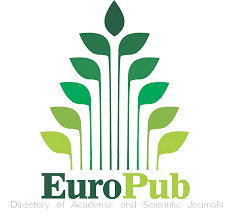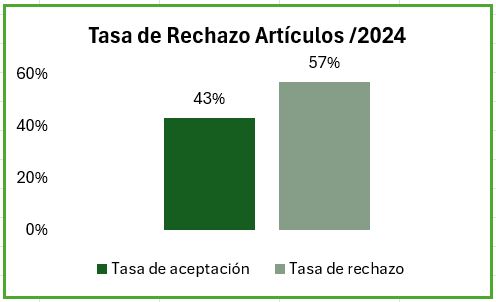Influence of environmental conditions in floristic composition in a submontane evergreen forest
Keywords:
nutrients soil, organic carbon, species composition, slope, tropical forestAbstract
The present work was development in a Submontane Evergreen forest located in the province of Zamora Chinchipe, southeast of Ecuador. Monitoring plots were installed in 1 ha, with altitude ranging from 889 – 946 m above sea level, to determine the effect of physiographic factors and soil characteristics on plant composition. Within the 10 x 10 m plot selected we identified species trees and 2 x 2 m plot species herbs and, it collected two samples of each soil organic and mineral horizons, where soil chemical characteristics were measured. A total of 124 trees and herbs species of 92 genera belonging to 49 families were identified. Our results based on data analyses show relationship between pH, active organic carbon, total organic carbon and particulate organic matter with regard to plant composition. These soil parameters could be considered a good indicator of soil fertility.References
Baldeck, C., Harms, K., Yavitt, J., John, R., Turner, B., Valencia, R., Navarrete, H., Davies, S., Chuyong, G., Kenfack, D., Thomas, D., Madawala, S., Gunatilleke, S., Bunyavejchewin, S., Kiratiprayoon, S., Yaacob, A., Nur Supradi, M., & Dalling, J. (2012). Soil resources and topography shape local tree community structure in tropical forest. Proceedings of the Royal Society Biological Sciences, 280: 20122532. http://dx.doi.org/10.1098/rspb.2012.2532
Baquero, F., Sierra, R., Ordoñez, L., Tipán, M., Espinosa, L., Rivera, M., & Soria, P. (2004). La vegetación de los Andes del Ecuador. EcoCiencia. P29.
Clark, D.A., Clark, D.B., Sandoval, M.R., & Castro, C. (1995). Edaphic and human effects on landscape-scale distribution of tropical rain forest palms. Journal of Ecology, 76, 2581-2594.
Clark, B.D., Clark, D.A., & Read, J. (1998). Edaphic variation and the mesoscale distribution of tree species in a neotropical rain forest. Journal of Ecology, 86, 101-112.
Clark, B.D., Palmer, M.W., & Clark, D.A. (1999). Edaphic factors and the landscape-scales distributions of tropical rain forest trees. Journal of Ecology, 80, 2662-2675.
Clark, B.D., & Clark, D.A. (2000). Landscape – scale variation in forest structure and biomass in a tropical rain forest. Forest Ecology and Management, 137, 185-198.
De Souza, J.P., Araújo, G.M., & Haridasan, M. (2007). Influence of soil fertility on the distribution of tree species in a deciduous forest in the Triângulo Mineiro region of Brazil. Plant Ecology, 191(2), 253-263. doi:10.1007/s11258-006-9240-2
Duivenvoorden, J.F., & Lips, J.M. (1995). A land-ecological study of soils, vegetation, and plant diversity in Colombian Amazonia. The Tropenbos Foundation. The Netherlands. Wageningen.
Enoki, T. (2003). Microtopography and distribution of canopy trees in a subtropical evergreen broad-leaved forest in the northern part of Okinawa Island, Japan. Ecological Research, 18, 103-113. doi:10.1046/j.1440-1703.2003.00549.x
Escudero, A., Gavilán, R., & Rubio, A. (1994). Una breve revisión de técnicas de análisis multivariantes aplicables en fitosociología. Editorial Universidad Complutense, Botánica Complutensis, 19, 9-38.
Gentry, A.H. (1992). Tropical forest biodiversity: distributional patterns and their conservational significance. Oikos, 63, 19-28. doi: 10.2307/3545512
Giardina, C.P., Coleman, M.D., Hancock, J.E., King, J.S., Lilleskov, E.A., Loya, W.M., Pregitzer, K.S., Ryan, M.G., & Trettin, C.C. (2004). The response of belowground carbon allocation in forest to global change. In Binkley, D., Menyailo, O. (Eds.), Trees species effects on soils: Implications for global change, Springer. Netherlands 55, 119-147.
Jiménez, L.S., Mezquida, E.T., Benito, M., & Rubio, A. (2007). Cambio en las propiedades del suelo por transformación de áreas boscosas en pastizales en Zamora- Chinchipe (Ecuador). Sociedad Española de Ciencias Forestales, 22, 65-70.
Jiménez, L.S., Mezquida E.T., Benito, M., & Rubio, A. (2008). Fertilidad del suelo de bosques tropicales y pastizales de uso ganadero en el sur del Ecuador. Sociedad Española de Ciencias Forestales, 25, 241-245.
Jiménez Álvarez, L.S. (2011). Relaciones entre el suelo y el Bosque Siempreverde Piemontano en Ecuador y cambios del suelo por la transformación del bosque en pastizales. Tesis doctoral (tesis inédita de doctorado). Departamento de Biología Vegetal. E.T.S.I. Agrónomos. Universidad Politécnica de Madrid. Madrid.
John, R., Dalling, J.W., Harms, K.E., Yavitt, J.V., Stallard, R.F., Mirabello, M., Hubbell, S.P., Valencia, R., Navarrete, H., Vallejo, M., & Foster, R.B. (2007). Soil nutrients influence spatial distributions of tropical trees species. Proceedings of the National Academy of Sciences of the United States of America, 104(3), 864-869.
Legendre, P., & Legendre, L. (1998). Numerical ecology. Elsevier. Amsterdam.
Lévesque, M., Walthert, L., & Weber, P. (2016). Soil nutrients influence growth response of temperate tree species to drought. Journal of Ecology, 104, 377-387. doi: 10.1111/1365-2745.12519
Maldonado, N. (2002). Clima y Vegetación de la Región Sur del Ecuador. In Aguirre, Z., Madsen, J., Cotton, E., Balslev, H. (Eds.). Botánica Austroecuatoriana: Estudios sobre los Recursos Vegetales en las provincias de El Oro, Loja y Zamora Chinchipe. Ediciones Abya Yala, Quito. EC.
Montagnini, F., & Jordan, C.F. (2005). Tropical forest ecology: the basis for conservation and management. Springer. Berlin Heidelberg New York.
Nadeau, M., & Sullivan, T. (2015). Relationship between plant biodiversity and soil fertility in a mature tropical forest, Costa Rica. Hindawi Publishing Corporation, http://dx.doi.org/10.1155/2015/732946
Pitman, N.C.A., Terborgh, J., Silman, M.R., Nuñez, P. (1999). Tree species distributions in an upper Amazonian forest. Ecology, 8 (80), 2651 -2661. doi: 10.1890/0012-9658(1999)080[2651:TSDIAU]2.0.CO;2
Pitman, N.C.A., Terborgh, J., Silman, M.R., Nuñez, P., Neill, D.A., Cerón, C.E., Palacios, A., & Aulestia, M. (2001). Dominance and distribution of tree species in upper amazonian terra firme forest. Ecology, 8(82), 2101 -2117. doi: 10.1890/0012-9658(2001)082[2101:DADOTS]2.0.CO;2
Poulsen, A.D., Tuomisito, H., & Balslev, H. (2006). Edaphic and floristic variation within a 1-ha plot of lowland Amazonian rain forest. Biotropica, 38, 468-478.
Sahu, S.C., Kumar, N., Lal, B., & Mohanty, R.C. (2012). Differences in tree species diversity and soil nutrient status in a tropical sacred forest ecosystem on Niyamgiri Hill Range, eastern Ghats, India. Journal of Mountain Science, 9, 492-500. doi:10.1007/s11629-012-2302-0
Sarvade, S., Gupta, B., & Singh, M. (2016). Composition, diversity and distribution of tree species in response to changing soil properties with increasing distance from water source – a case study of Gobind Sagar Reservoir in India. Journal of Mountain Science, 13(3), 522-533. doi:10.1007/s11629-015-3493-y
Sollins, P. (1998). Factors influencing species composition in tropical lowland rain forest: does soil matter? Ecology, 79(1), 23-30.
Svenning, J.C. (2001). Enviromental heterogeneity, recruitment limitation and the mesoscale distribution of palms in a tropical mountain rain forest (Maquipucuna, Ecuador). Journal of Tropical Ecology, 17, 97-113. doi: http://dx.doi.org/10.1017/S0266467401001067
Ter Braak, C.J.F., & Smilauer, P. (1997). CANOCO for windows version 4.5. Centre for Biometry. The Netherlands. Wagenigen.
Tsui, C., Chen, Z., & Hsieh, C. (2004). Relationships between soil properties and slope position in a lowland rain forest of southern Taiwan. Geoderma, 123, 131-142. doi:10.1016/j.geoderma.2004.01.031
Valencia, R., Foster, R.B., Villa, G., Condit, R., Svenning, J.C., Hernández, C., Romoleroux, K., Losos, E., Magards, E., & Balslev, H. (2004). Tree species distributions and local habitat variation in the Amazon: large forest plot in eastern Ecuador. Journal of Ecology, 92, 214–229.
Van Der Meer, P.J., & Bongers, F. (1996). Patterns of tree-fall and branch-fall in a tropical rain forest in French Guiana. Journal of Ecology, 84, 19-29. doi: 10.2307/2261696
Vivian-Smith, G. (1997). Microtopographic heterogeneity and floristic diversity in experimental wetland communities. Journal of Ecology, 85, 71-82.
Wang, L., Mou, P., Huang, J., & Wang, J. (2007). Spatial heterogeneity of soil nitrogen in a subtropical forest in China. Plant and Soil, 295, 137-150. doi: 10.1007/s11104-007-9271-z
Wiens, J.A. (1989). Spatial scaling in ecology. Funtional Ecology, 3, 385-397.
Wright, J. (2002). Plant diversity in tropical forest: a review of mechanisms of species coexistence. Oecologia, 130, 1-14.
Xia, S.W., Chen, J., Schaefer, D., & Deto, M. (2015). Scale-dependent soil macronutrient heterogeneity reveals effect of litterfall in a tropical rainforest. Plant and Soil, 391, 51-61. doi: 10.1007/s11104-015-2402-z
Xia, S.W., Chen, J., Schaefer, D., & Goosale, U.M. (2016). Effect of topography and litterfall input on fine-scale patch consistency of soil chemical properties in a tropical rainforest. Plant and Soil. doi: 10.1007/s11104-016-2854-
Downloads
Published
How to Cite
Issue
Section
License
Copyright (c) 2017 Bosques Latitud Cero

This work is licensed under a Creative Commons Attribution-NonCommercial-ShareAlike 4.0 International License.
This work is published under the Creative Commons Attribution-NonCommercial-ShareAlike 4.0 International (CC BY-NC-SA 4.0) license. This means that users may copy, distribute, and adapt the content, provided that proper credit is given to the authors and the journal. Commercial use of the material is not permitted. Additionally, any derivative work must be distributed under the same license. This license ensures open access to knowledge, promoting the dissemination and reuse of published works for non-commercial purposes, respecting authorship, and ensuring the free circulation of content under fair terms.





























